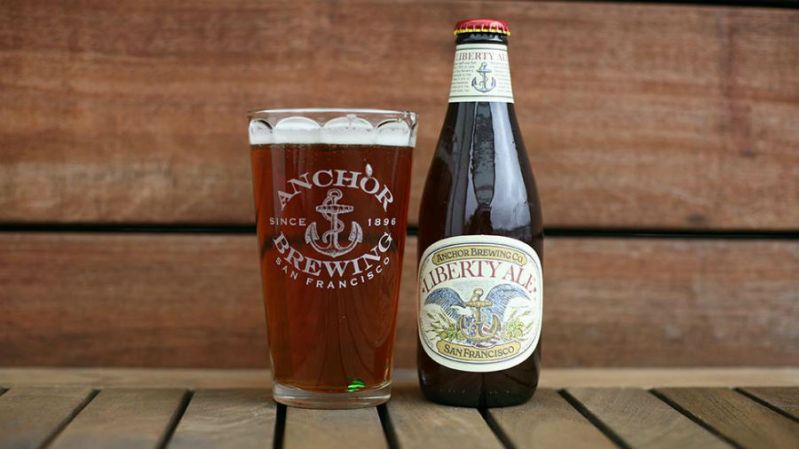The Demise Of Anchor Brewing Company: What Went Wrong?

Table of Contents
Changing Consumer Preferences and the Rise of Craft Beer Competition
The craft beer landscape has undergone a dramatic transformation in recent decades. Consumer tastes have shifted significantly, demanding more experimental and diverse options beyond traditional styles. This change directly impacted Anchor Brewing Company's position in the market.
- Increased competition from smaller, innovative breweries: The rise of countless microbreweries and craft breweries introduced a wave of new and exciting beer styles, many pushing creative boundaries with unique ingredients and brewing techniques. Anchor, with its more established and arguably less adventurous portfolio, struggled to keep pace.
- The growing popularity of IPAs and other styles overshadowing Anchor's traditional offerings: The explosive popularity of IPAs, particularly West Coast IPAs, captured significant market share. Anchor, while producing its own IPAs, didn't fully capitalize on this trend and its classic styles, while beloved by some, felt less exciting to a new generation of craft beer drinkers.
- Consumer demand for local and regional breweries: The "locavore" movement extended to beer, with many consumers prioritizing locally produced brews. This preference for supporting regional breweries put pressure on larger, nationally distributed brands like Anchor.
- Anchor's failure to adapt its product line to keep up with trends: Anchor's relatively slow introduction of new and trendy beer styles left them lagging behind more agile competitors who were quicker to respond to evolving consumer preferences. This lack of innovation in their product line became a significant weakness.
This combination of factors created a challenging environment for Anchor, highlighting the importance of constant innovation and adaptation within the dynamic craft beer industry. The brewery's perceived lack of innovation compared to newer players on the scene further contributed to its decline.
Strategic and Management Decisions
Anchor Brewing Company's struggles weren't solely due to external factors; internal strategic decisions and management choices played a significant role in its downfall.
- The role of Sapporo Holdings' acquisition and subsequent management strategies: The acquisition by Sapporo Holdings, a Japanese brewing giant, brought about changes in management and strategic direction. While the intent may have been to leverage Sapporo's resources, the execution seemingly lacked the understanding of the nuanced American craft beer market.
- Potential issues with marketing and distribution strategies: Anchor's marketing efforts may not have been effective enough to reach and engage new consumer segments, particularly younger demographics. Distribution challenges, potentially stemming from the Sapporo acquisition, could also have limited market reach.
- Lack of investment in brand modernization and expansion: Insufficient investment in updating the Anchor brand image and expanding its production capacity limited its ability to compete effectively with rapidly growing competitors.
- Impact of cost-cutting measures on product quality and brand perception: Cost-cutting measures, often implemented after the Sapporo acquisition, potentially impacted the quality of Anchor's beers, negatively affecting its brand reputation among discerning consumers.
Internal conflicts and managerial shortcomings, while not publicly documented in detail, could have further exacerbated these issues and hindered the company's ability to respond effectively to market changes.
The Impact of External Factors
External economic forces and unforeseen events also significantly impacted Anchor's performance.
- Rising ingredient costs and inflation impacting profitability: The increasing costs of raw materials, like hops and barley, coupled with general inflation, squeezed Anchor's profit margins, making it harder to compete on price and maintain profitability.
- Supply chain challenges affecting production and distribution: Disruptions to the global supply chain, particularly during the COVID-19 pandemic, created significant hurdles in procuring ingredients and distributing finished products.
- The impact of the pandemic on on-premise sales (bars and restaurants): The COVID-19 pandemic severely impacted on-premise sales, a significant revenue stream for many breweries, including Anchor. The closure of bars and restaurants dramatically reduced beer consumption in these settings.
- Increased competition from both large and small breweries: The already highly competitive craft beer market faced further pressure from both large multinational breweries and the continued emergence of numerous small, innovative breweries.
These external pressures, combined with internal vulnerabilities, created a perfect storm that ultimately led to Anchor's demise.
The Loss of Brand Identity and Nostalgia
Anchor Brewing Company's long history and iconic status, while initially assets, arguably became a hindrance. The brewery's strong association with tradition may have prevented the necessary adaptations and modernization to stay relevant in the evolving market.
- Failure to connect with younger generations: Anchor struggled to attract and engage younger generations, who were drawn to newer, more experimental craft breweries.
- Over-reliance on legacy products without significant innovation: The continued emphasis on its classic beers, while nostalgic for older customers, limited its appeal to a broader market seeking new and exciting flavors.
- The challenge of balancing tradition with change: The delicate balance between preserving its heritage and adapting to modern trends proved difficult for Anchor to navigate effectively.
- The emotional attachment to the brand and the impact of its decline on consumers: Many consumers felt a deep connection to Anchor, making its decline even more poignant and highlighting the significant impact of the brand’s failure on its loyal followers.
Conclusion
The downfall of Anchor Brewing Company highlights the complexities of maintaining success in a dynamic and competitive market. A combination of evolving consumer tastes, internal strategic missteps, and external economic pressures contributed to its decline. While nostalgia played a role, the failure to adapt to changing market demands ultimately proved fatal. The Anchor Brewing Company story serves as a potent reminder of the constant need for innovation, adaptability, and a keen understanding of the market.
Call to Action: Understanding the lessons from Anchor Brewing Company's demise is crucial for both established and emerging breweries. Learning from its mistakes can help other brands avoid similar pitfalls and build sustainable success in the ever-evolving craft beer landscape. Analyze your own brewing business and consider the strategies you could employ to prevent a similar fate for your own brand. Don't let your Anchor Brewing Company-esque brand suffer the same fate – adapt, innovate, and thrive.

Featured Posts
-
 Oilers To Eliminate Kings Analyzing The Betting Odds And Series Outlook
May 09, 2025
Oilers To Eliminate Kings Analyzing The Betting Odds And Series Outlook
May 09, 2025 -
 Short And Sweet A Top Rated Stephen King Series For A Quick Binge
May 09, 2025
Short And Sweet A Top Rated Stephen King Series For A Quick Binge
May 09, 2025 -
 Dakota Johnson Premieres Materialist With Family In Tow
May 09, 2025
Dakota Johnson Premieres Materialist With Family In Tow
May 09, 2025 -
 Lake Charles Easter Weekend Your Guide To Live Music And Events
May 09, 2025
Lake Charles Easter Weekend Your Guide To Live Music And Events
May 09, 2025 -
 Vehicule Projete Contre Un Mur A Dijon Rue Michel Servet Le Conducteur Se Constitue Prisonnier
May 09, 2025
Vehicule Projete Contre Un Mur A Dijon Rue Michel Servet Le Conducteur Se Constitue Prisonnier
May 09, 2025
